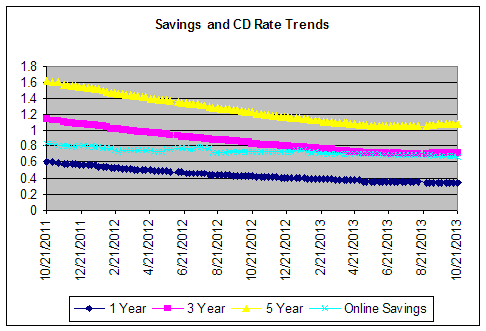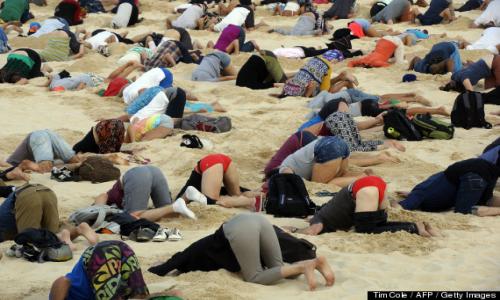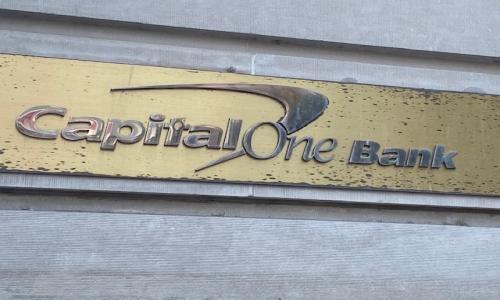Even as the economy continues to show signs of firming and the stock market continues its upward trend, the rate on savings accounts and many CDs continue their downward movement. It's clear that until the Fed raises the Fed Funds rate, money markets, cds, and savings accounts will pay low yields. The only consolation is that inflation remains low, meaning the actual inflation adjusted return is higher.
As the chart below shows, savings as well as 12-month and 36-month CD rates moved down again last week to their lowest levels since we began tracking rates. The slope of the decline has slowed and is now more like a slow downward drift. It seems that like the economy, that we have probably hit bottom, or are close to it. The average savings rate according to the BestCashCow rate tables has fallen from 3.64% APY last year to 1.77% APY today. The rate you'll have find at your corner bank is probably a good deal lower.
There's no significant change to report in the spread between savings rates and 36-month CDs. The spread ticked up a bit but nothing that isn't within the normal range of the past few months. Notice that the spread between savings and 3-year CDs that we saw widen in the spring is still there, a sign that the economy is poised for expansion. One wonders who will blink first: will longer term CD yields come down in the absence of any sign of inflation, or will short term savings and CD accounts rise as the economy strengthens?
I still think that the bias is towards rate increases later in the year so I would stay short-term and wait. An improving economy will force the Fed to eventually raise rates, and that will cause yields to start rising.

The spread between the average BestCashCow savings rates and 36-month CD rates remains steady as the economy stabilizes and investors, banks, and consumers wait to get the next read on where the economy is going.













Add your Comment
or use your BestCashCow account